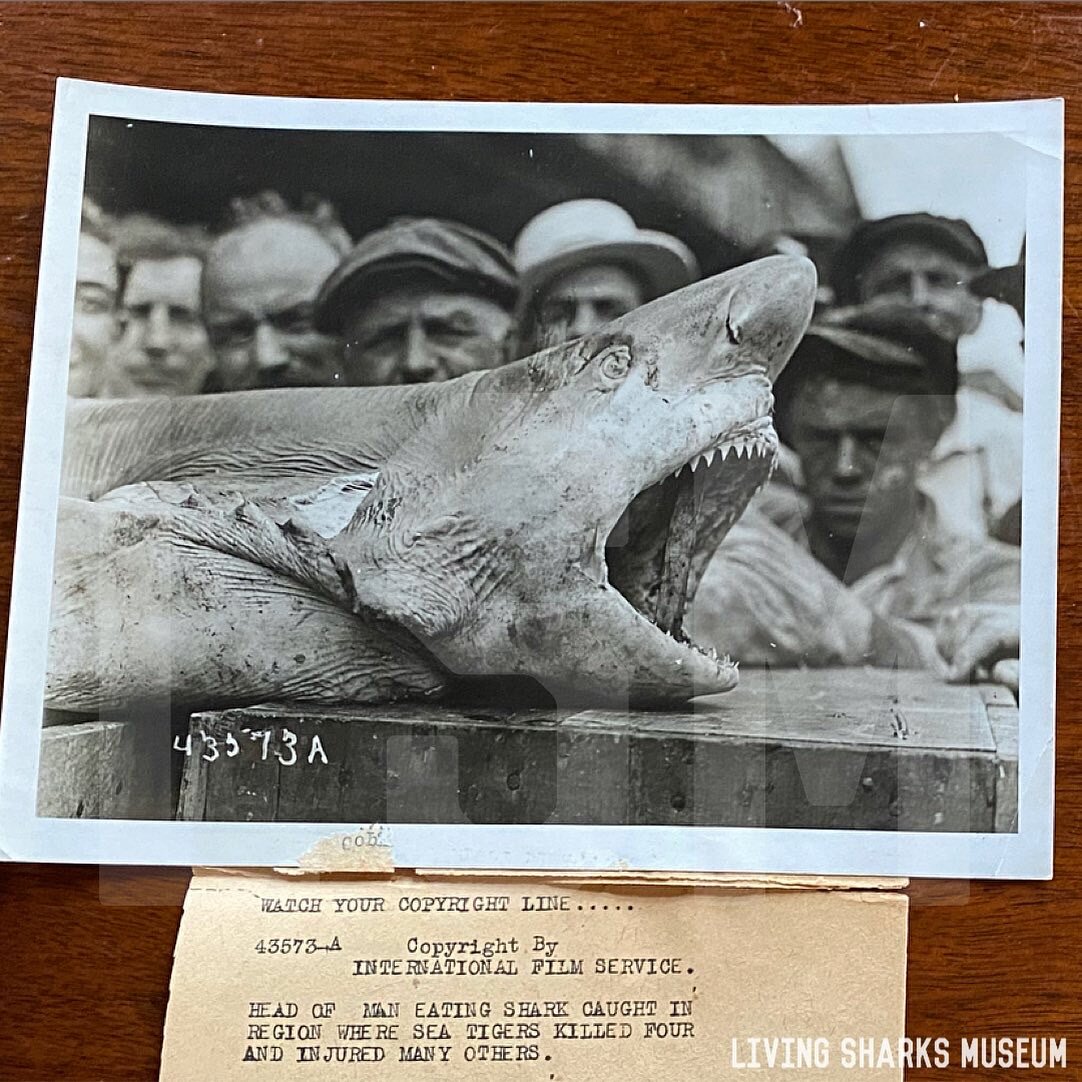SHARK INCIDENTS
An Exhibition of Stories that Changed Public Perception
Sharks have been implicated in “attacks” all over the world, though they are rare and insubstantial to the everyday causes of death that far exceed their records. However there are a few specific incidents that, due to their unusual nature and degree of public awareness, managed to drastically change overall perception of sharks. Living Sharks Museum highlights these incidents as significant marks on the timeline of the shark history story.
SELECTIONS FROM THe SHARK Incidents EXHIBIT
NEW JERSEY SHARK ATTACKS OF 1916
In July of 1916, New Jersey became the site of a series of vicious shark attacks that would span 12 days and take the lives of four people and severely injuring one. "With previous deadly attacks in Beach Haven (Charles Epting Vansant, July 1st, 1916) and Spring Lake (Charles Bruder, July 6th, 1916) the shark made its way north and down a freshwater creek in Matawan, New Jersey on July 12, where it would attack and kill 12-year-old Lester Stillwell and 24-year-old Stanley Fisher within an hour of each other. The suspected man-eater would be caught two days later in the nearby Raritan Bay. To be sure it was the killer, the over 300 pound monster was dissected, and 15 pounds of human remains were found in its stomach." While this has been the legendary tale, the attacks were most likely made by multiple sharks. The attacks in Matawan Creek have been accepted to be that of a Bull Shark, the only shark that can survive in both fresh and saltwater. The incident was heavy inspiration for Peter Benchley, who would write his 1974 novel Jaws set on nearby Long Island.
SINKING OF THE USS INDIANAPOLIS
In a tragic turn of events, the cruiser USS Indianapolis was sunk by two Japanese torpedoes on their return from delivering the final parts to the Hiroshima bomb, just after midnight July 30, 1945. After nearly 4 1/2 days in the water, only 317 came home. Those who had made it to the water suffered dehydration, sun poisoning, vertigo, infection, and scavenging by sharks. Living Sharks Museum holds memory to both those who were lost and those who survived through an exhibit of artifacts that intimately tell the story of those fateful hours. Shark science quickly received an injection of funding to better understand their foe and how to protect from them.
MORE TO COME…




